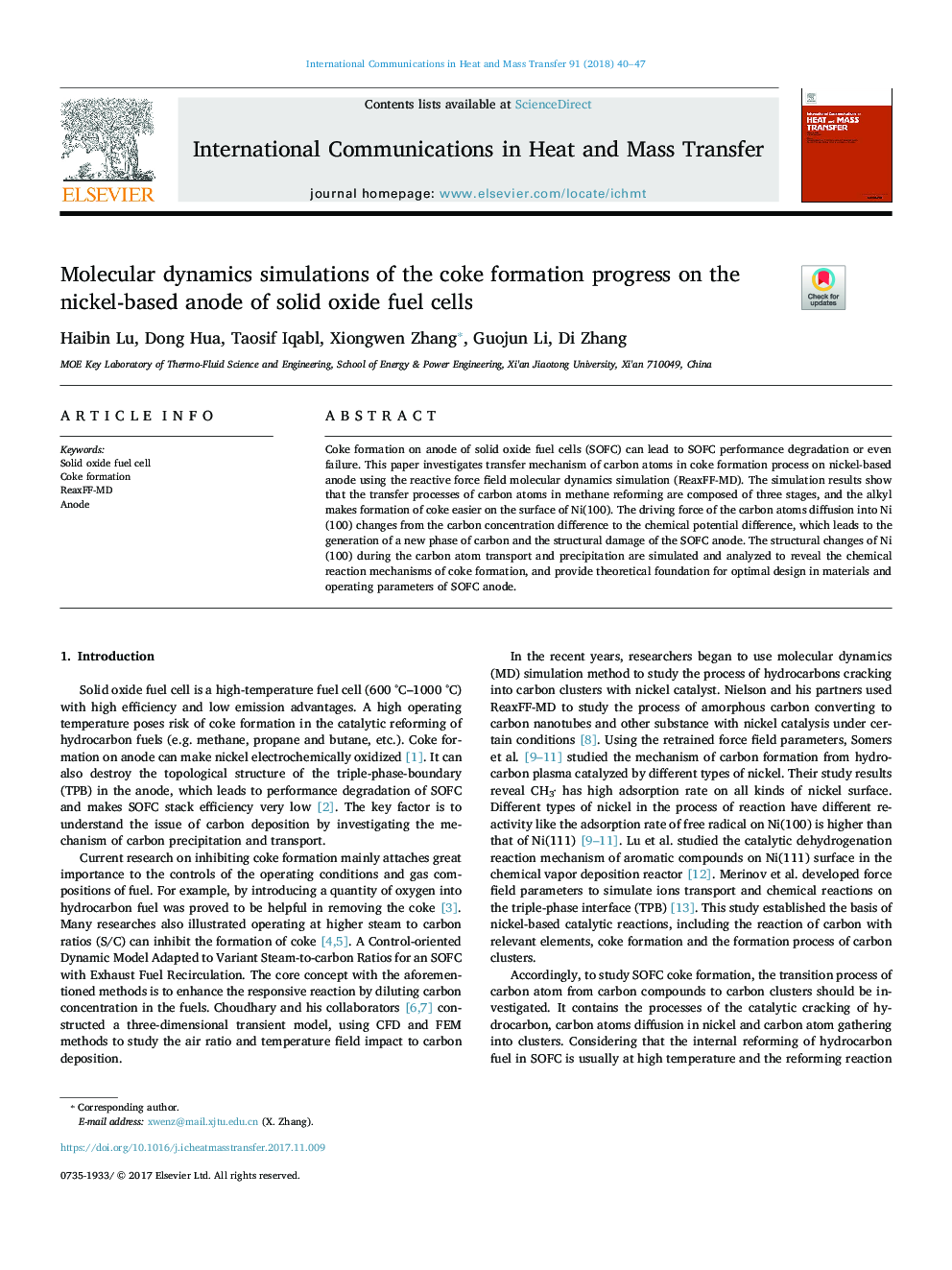| Article ID | Journal | Published Year | Pages | File Type |
|---|---|---|---|---|
| 7053026 | International Communications in Heat and Mass Transfer | 2018 | 8 Pages |
Abstract
Coke formation on anode of solid oxide fuel cells (SOFC) can lead to SOFC performance degradation or even failure. This paper investigates transfer mechanism of carbon atoms in coke formation process on nickel-based anode using the reactive force field molecular dynamics simulation (ReaxFF-MD). The simulation results show that the transfer processes of carbon atoms in methane reforming are composed of three stages, and the alkyl makes formation of coke easier on the surface of Ni(100). The driving force of the carbon atoms diffusion into Ni(100) changes from the carbon concentration difference to the chemical potential difference, which leads to the generation of a new phase of carbon and the structural damage of the SOFC anode. The structural changes of Ni(100) during the carbon atom transport and precipitation are simulated and analyzed to reveal the chemical reaction mechanisms of coke formation, and provide theoretical foundation for optimal design in materials and operating parameters of SOFC anode.
Related Topics
Physical Sciences and Engineering
Chemical Engineering
Fluid Flow and Transfer Processes
Authors
Haibin Lu, Dong Hua, Taosif Iqabl, Xiongwen Zhang, Guojun Li, Di Zhang,
